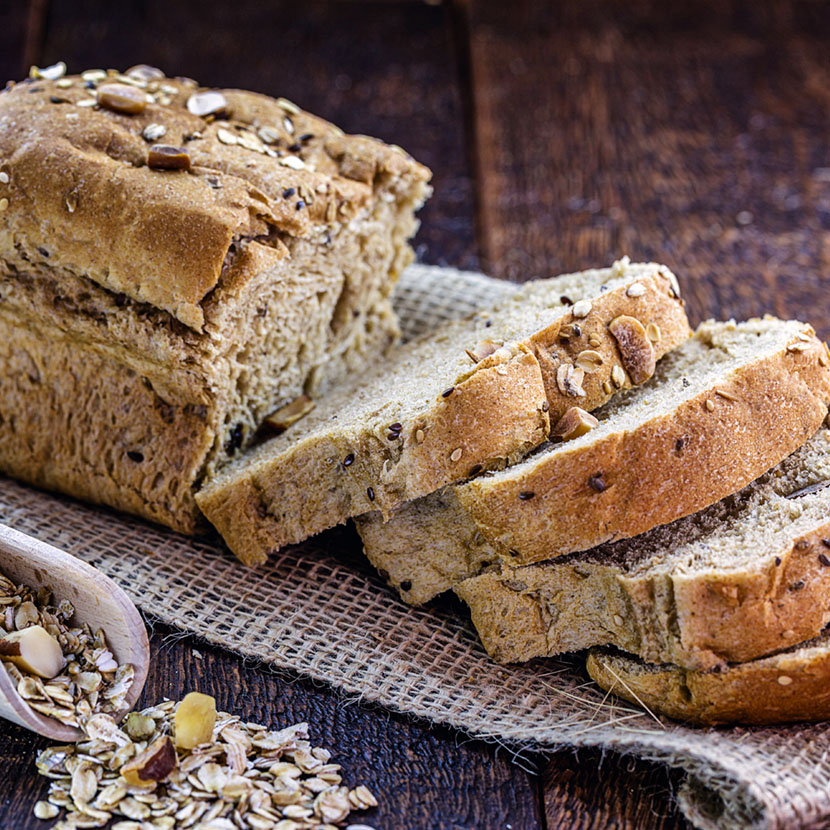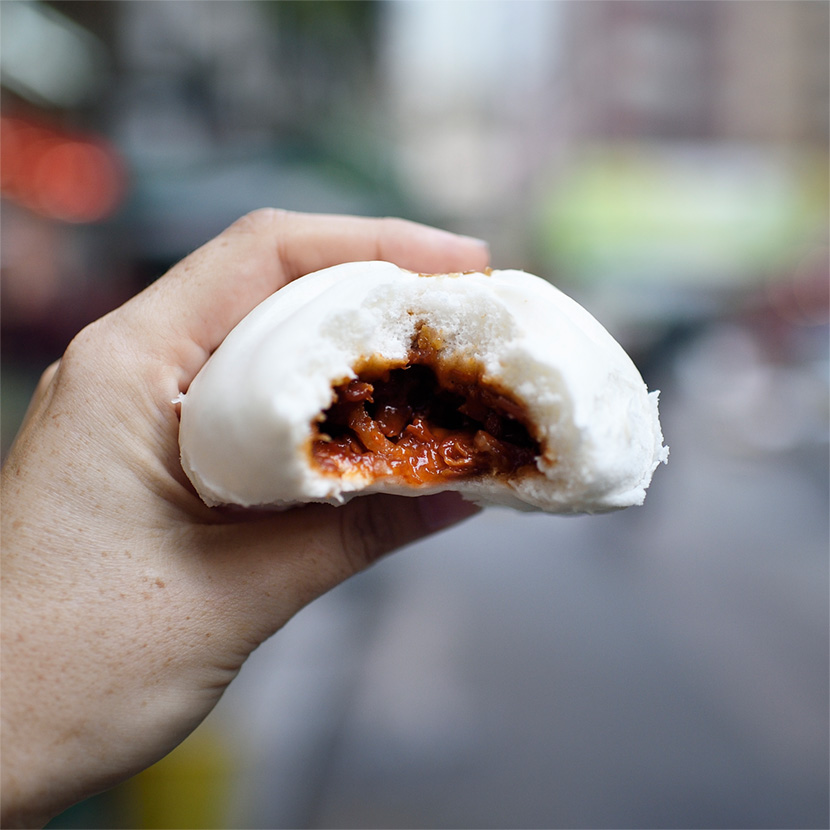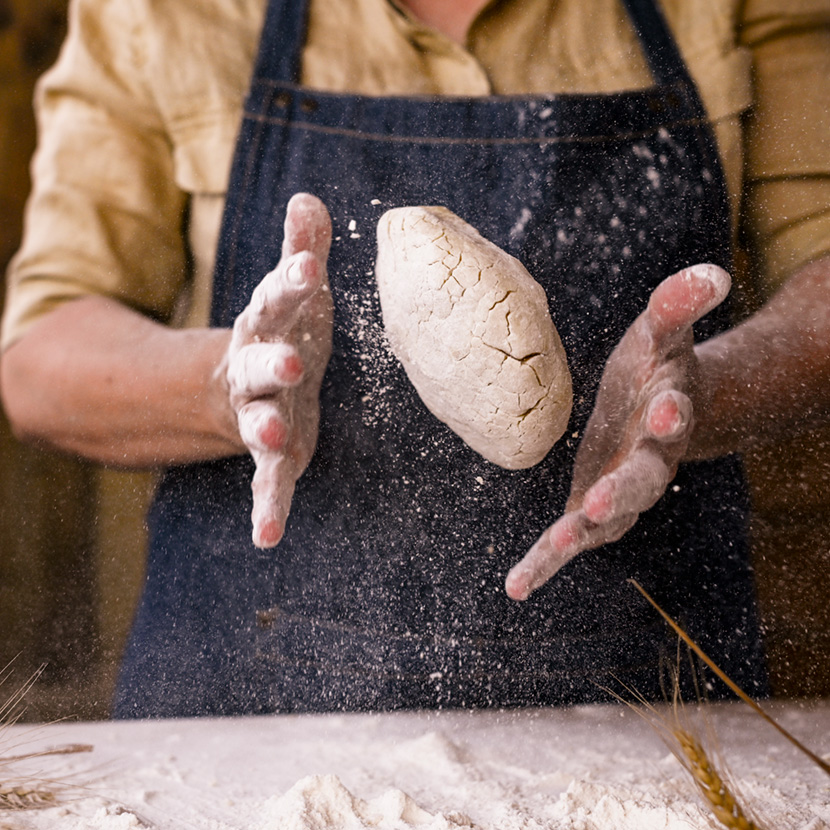VOOD FEED
Daily Bread


From cultural heritage to lifestyle choice
From the ancient Egyptians, who are considered the pioneers of leaven, to the Romans, who spread bread to all corners of their empire, the history of bread is as varied as it is fascinating. The first records of bread date back as far as 14,000 years ago, long before modern civilization as we know it began to flourish. Not only was this ancient staple food a witness to human evolution, but it also played a crucial role in the development of societies around the globe. In Europe, evidence has been found of bread production dating back to the times of the first agricultural crops in the Neolithic Age. It’s fascinating to watch how the recipes, baking techniques, and even the symbolic meaning of bread have changed over the centuries, or how these are sometimes so perfect that we still bake it just as our ancestors once did. Did you know, for example, that in 2014 German bread culture was added to UNESCO’s intangible cultural heritage list?
We’ll also tell you what makes bread a lifestyle statement and food trend today and so diverse around the globe. Maybe you’ve already heard of the latest “crust decoration” trend? It’s that easy to turn the crust of your bread into a work of art! A fragrant, crunchy gift for yourself and others. And don’t miss our top 10 breads in the world and the best tips for getting started!



Ancient grains

Bread is a food that is as essential as it is fascinating for vegans! Unlike its refined cousins cakes and biscuits, bread does not contain any animal products. It consists of flour, water, salt and, in some cases, spices. Egg and milk are actually only found in milk rolls, although there are some types of bread that contain buttermilk.
Another current trend is bread made from gluten-free flour: buckwheat, coconut flour or rice, corn and millet flour are very popular. Ancient grains such as spelt, einkorn and emmer are also popular. They belong to the wheat variety. However, emmer and einkorn in particular were cultivated a thousand years before wheat as we know it. For bread fans, ancient grains are considered to be less highly bred and therefore richer in nutrients and minerals. Ancient rye forms such as forest perennial rye are also on trend, while adding grains and nuts and baking wholemeal bread are popular, too. So there’s something for (almost) every dietary style. Some have also discovered the joy of grinding their own grain and are taking home-baking to a new level. That said, bread has been important to us humans right from the very beginning.
Bread was once more important than meat!
The history of the Roman Empire is rich in military successes, but life in the army was not always marked by glory and victory. One particularly curious but significant chapter is the revolts caused by the inadequate supply of grain to the legionnaires. This shortage endangered the daily bread, which was a crucial part of the diet of the Roman soldiers. Its absence led to discontent and, in some cases, even open mutinies within the army. These revolts were not only a sign of the material needs of the soldiers, but also underlined the importance of a stable and balanced diet.
In those times, animal products were often considered impure and barbaric. Bread was holy. Unfortunately, this perception has changed drastically up until recently – especially with regard to meat. That said, bread has never lost its importance and, thanks to the global community, continues to enjoy new trends and unknown new varieties of baked goods.

Ten types of bread you have to try
10 countries, 10 varieties of bread. The world of bread is a fascinating universe that is as diverse as the cultures of our earth. Each type of bread brings its own unique story, embedded in the traditions and everyday life of the people who created it. Here we introduce you to ten types of bread from different corners of the world, each with its own distinctive character and taste:
1. Ciabatta from Italy:
This airy, porous bread comes from Italy’s Veneto region. Known for its crispy crust and the large holes inside, it’s perfect for sandwiches of any kind.
2. Sourdough from San Francisco, USA:
Famed for its characteristic sour taste, which comes from natural fermentation. Sourdough is a symbol of San Francisco’s Gold Rush era and a testament to the region’s artisanal baking.

3. Tortilla from Mexico:
More than just bread… the tortilla is a staple of Mexican cuisine. Made from corn or wheat, it serves as a versatile base for countless dishes.
4. Rye bread from Russia:
Dark, dense and with a slightly sour taste, this bread is an integral part of the Russian diet. It is traditionally baked with sourdough.

5. Focaccia from Italy:
Another Italian specialty. This flat, oil-rich bread is often topped with rosemary, olives, and other Mediterranean ingredients.
6. Challah from Jewish cuisine:
This rich, braided bread is traditionally served on the Sabbath and during the holidays. It is known for its soft texture and sweet taste.

7. Baozi from China:
Steamed buns filled with a variety of ingredients, from meat to sweet bean pastes. Baozi are a popular snack throughout China
8. Injera from Ethiopia:
A biscuit-like, sour-tasting flatbread that serves as an edible plate on which food is served. Injera is made from teff flour, which is rich in iron

9. Soda Bread from Ireland:
Quick and easy to bake, this bread doesn’t need to rise. The ingredients typically include flour, baking soda, buttermilk, and salt, so it’s not purely plant-based.
10. Damper from Australia:
Originally baked by farm workers and travellers, this simple bush bread is traditionally baked on a campfire and often seasoned with Australian bush spices

Each of these breads represents a culinary heritage that has been passed down from generation to generation. It is as if it not only nourishes our bodies, but also satisfies our hunger for human companionship and makes us happy. And then there’s the extensive artisanal craft that goes into it…
From wood-fired ovens to modern conventional ovens

Baking bread is an art form, and each culture has its own unique techniques and traditions. In many parts of the world, baking bread is considered a deeply personal affair that includes not only the ingredients, but also the technology and specifically adapted oven. In Ethiopia, for example, injera is baked on large, flat, hot stones, while in India, naan is traditionally prepared in a tandoor oven. Even in our latitudes, at least in the past, everyone was aware of village ovens. On the one hand, these traditional methods offer a deep insight into the culture, and on the other hand, they also have a great influence on the taste and texture of the bread.
And today, artisanal bread making has been rediscovered as a craft, even if state-of-the-art ovens are used in many cases. Baking bread has indeed become a mega food trend. The bread of the year is chosen annually and, as with wine, we now have bread sommeliers. Sonja Laböck from Munich, master baker and head of Brotmanufaktur Schmidt, was the first to bear the title of bread sommelier.
The World Bread Championships: a duel of master bakers
In the world of culinary arts, there is hardly any other event that gets bread lovers’ pulses racing as fast as the World Bread Championships. This one-of-a-kind event brings together the best bakers from around the world to showcase their skills in various categories, from traditional breads to innovative creations. The World Bread Championships is a stage for craftsmanship excellence and at the same time a forum for exchanging knowledge and techniques that advance the art of bread baking. Here, bread is celebrated in all its facets, from the selection of ingredients to the dough to perfection in the baking process. Participants must have a deep passion for baking craft and the ability to combine traditional techniques with modern interpretations. The result is a fascinating spectacle that reflects the diversity and creativity of bread culture worldwide.

Lutz Geißler: Golden tips for baking beginners

He may be the social media guru of baking, but Lutz Geißler, known for his Plötz blog, is definitely an authority when it comes to baking bread.
In his blog, he provides insights into the art of baking bread and shares valuable tips for beginners. For Geißler, it all starts with a love of bread and respect for the ingredients. He stresses the importance of patience and precision in the baking process and advises novice bakers to start with simple recipes to get a feel for the dough process. Another key piece of advice is to experiment with different types of flour and levels of hydration to understand the effects on the texture and flavour of the bread. Geißler also encourages people to explore baking with sourdough, as it adds an extra dimension of depth of flavour and digestibility to bread. His most important tip: “Don’t be discouraged by setbacks. Every failed loaf of bread is a step on the way to becoming a master baker.”
Getting started made easy
We have five more starter tips to help you discover the joy of baking bread for yourself:
1. Ice cubes in the oven make for an ultra-crispy crust, while ensuring your bread doesn’t dry out on the inside. This is because the ice cubes melt in the oven, release steam and moisten your loaf. To do so, place a simple metal container on the base of your oven and fill it with ice cubes. Oh and by the way, the steam also produces a beautiful sheen on your bread.

2. The trick: bake in a cast-iron pot. Look forward to the moment when you lift the lid and the shine and aroma of a perfectly crispy loaf hit you. Baking in a pot is considered an insider tip, especially for beginners, as the pot provides the bread with evenly high heat all around, which would otherwise dissipate in the oven. Bread in a cast iron pot not only forms a gigantic crust, but also remains pleasantly moist on the inside without drying out.
3. Use a proofing basket: Proofing baskets (made of wicker, raffia, wood pulp or silicone) are different shaped bowls in which a dough can mature before the bread is baked. After the first maturation phase (the so-called stick proofing), you place your dough in the proofing basket, where it gets the desired shape without falling apart. These can be round, square, oval or even elongated baguette shapes. In the case of most breads, once this piece proofing phase is finished, we are left with a ready-to-bake loaf.

4. Knead and leave for a while: baking bread requires patience. The longer a dough has to rise and the longer it is kneaded, the better.
5. Bake small rolls: if you want to dip your toe in, you can start with a simple recipe for rolls. These do not require a baking pan and often don’t even require time-consuming kneading.

Yeast vs. sourdough: a question of taste or health?

The debate about yeast and sourdough bread is as old as the art of bread baking itself. But is yeast really bad? The answer lies not in a simple comparison, but in the consideration of the different properties and advantages of both raising agents. Yeast bread is characterised by its lightness and rapid fermentation, which makes it particularly attractive to beginners. Sourdough, on the other hand, requires more time and patience, but rewards with a richer flavour profile and improved shelf life of the bread. In addition, sourdough is said to be more digestible, as the longer fermentation process breaks down phytic acid and makes nutrients more readily available.
But instead of a competition, why not consider both methods as complementary techniques that have their place in the art of bread baking depending on preference and requirements? Rather than talking about good or bad, baking fans should embrace the variety of possibilities offered by yeast and sourdough.
When it comes to sourdough, it would be remiss of me not to mention our colleague Katja H.’s top tip: “I prefer to bake sourdough bread in a clay pot. This stores the evaporating water, making the bread nice and moist. It’s also worth putting the clay pot in the oven while it is preheating to ensure it heats through evenly.“
A greener bite: vegan bread and sandwich trends for 2024
Now, ready to hear about this year’s key trends? The year ahead definitely looks green – at least as far as bread and sandwich trends are concerned! Vegan nutrition is no longer a niche market and has now conquered the masses, increasing the choice in this market. The latest tips and hype range from fermented vegetables and vegan cheese alternative fillings to innovative breads baked with ingredients like sweet potato, quinoa and chia seeds.
The most popular vegan spreads range from sweet marmalades and classic avocado pâté rand versatile pulse pastes right through to nutty spreads to delight any palate.
When it comes to sandwich styles, imagination and flavour variety are the order of the day – think creative combinations like kimchi-tofu sandwiches, jackfruit “pulled pork“-alternative on fresh ciabatta or toasted vegetable wraps with vegan aioli. Not only are these trends a feast for the taste buds, they’re also a step towards a sustainable and healthy lifestyle.

Bread rediscovered

2024’s vegan trends underscore the increasing creativity and growing awareness of the environment and animal welfare. They show that the future of nutrition is plant-based, with no sacrificing taste or variety necessary. Whether it’s traditionally baked bread or innovative new recipes, the possibilities are endless.
The personal experience of visiting local bakeries and discovering the stories behind the bread seems irreplaceable to us. After all, the art of baking bread and creative vegan trends offer a rich source of culinary discoveries. So, why not go on a journey of taste discovery and experience the variety of bread for yourself? You can find fine flour and other baking ingredients, for both bread and cakes, at Velivery.
And now we want to know the truth: how do you bake at home? What kneading and dough-proofing tricks do you use? What are your absolute no-gos when it comes to baking bread – are there even any?
Recipes
Bread in all its artisanal glory… three recipes from us to make your daily bread ultra delectable.

















